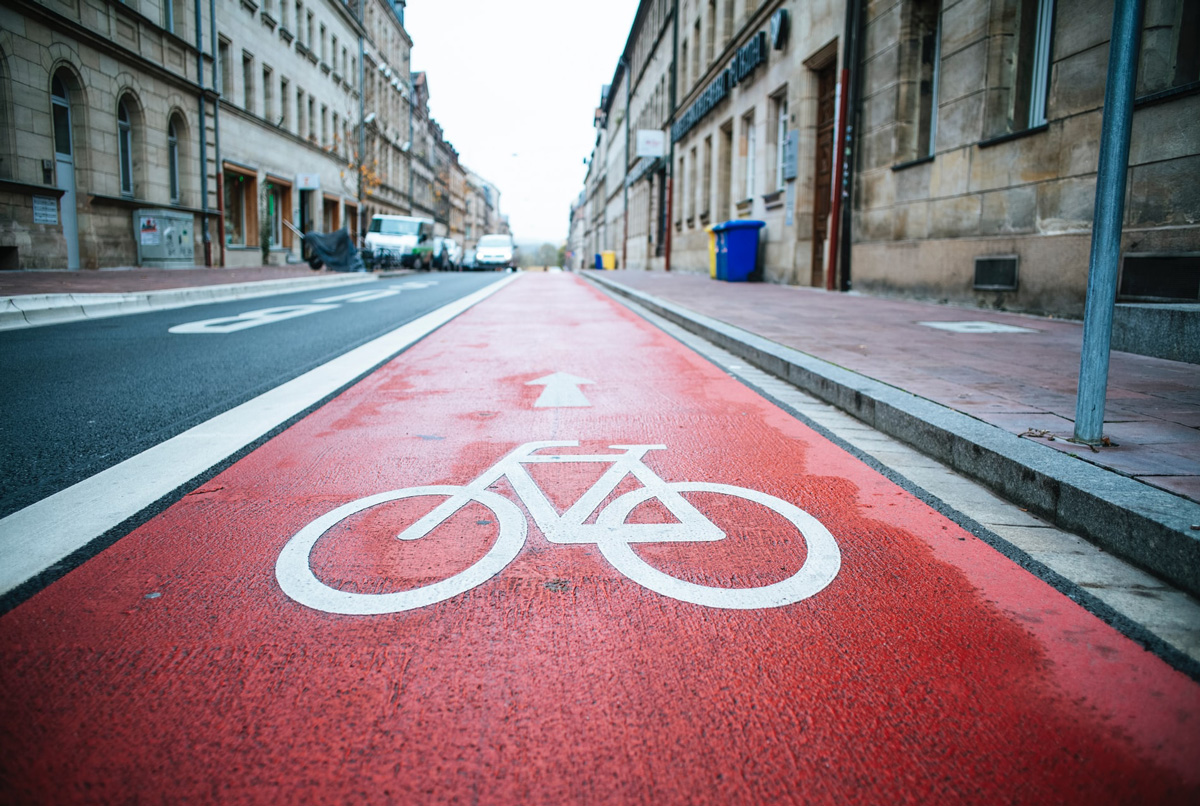#MoveTheDate
Effective bicycle infrastructure that is safe, direct, and with as few interruptions as possible entices more people to choose a bicycle over other modes of transportation. Better bicycle infrastructure could increase the proportion of bicycle trips up to 35% of all trips, and move Earth Overshoot Day by 9 days.
What is the solution?
Effective bicycle infrastructure, has dedicated paths, bicycle-oriented street designs, and convenient storage at the beginning and end of trips. Northern European examples show that improved infrastructure can result in 40% of trips being made by bike.
This solution improves our resource security in the cities category.
How does it #MoveTheDate?
Bicycles are the most efficient way to move people in terms of energy per km, and their compact size makes them ideal for urban regions. Replacing a significant portion of car trips with bicycle trips has a huge impact on transportation emissions. Improving the convenience of non-car transportation also allows many people to live car free.
How is it scalable?
Over the past 50 years, the dominance of large motorized vehicles for personal transportation has influenced how we design our cities. Many cities are flat and compact enough to be well suited for bicycle trips. But to make this happen, infrastructure needs to accommodate the needs of bicyclists.
What is the solution?
Effective bicycle infrastructure, has dedicated paths, bicycle-oriented street designs, and convenient storage at the beginning and end of trips. Northern European examples show that improved infrastructure can result in 40% of trips being made by bike.
This solution improves our resource security in the cities category.
How does it #MoveTheDate?
Bicycles are the most efficient way to move people in terms of energy per km, and their compact size makes them ideal for urban regions. Replacing a significant portion of car trips with bicycle trips has a huge impact on transportation emissions. Improving the convenience of non-car transportation also allows many people to live car free.
How is it scalable?
Over the past 50 years, the dominance of large motorized vehicles for personal transportation has influenced how we design our cities. Many cities are flat and compact enough to be well suited for bicycle trips. But to make this happen, infrastructure needs to accommodate the needs of bicyclists.

Information about which cities are doing the most to expand their infrastructure and inspire a culture of cycling can be found at Copenhagenize.eu, whose holistic ranking includes cities such as Copenhagen (#1) and Amsterdam (#2), longtime leaders in bicycle infrastructure, but also newcomers such as Bogota (#12) and Taipei (#17), who have been aggressively expanding their networks, as well as bike share and bicycle storage infrastructure.
“Making Cycling Irresistible: Lessons from the Netherlands, Denmark, and Germany” outlines the recipe for bicycle success: rather than innovative new technologies or flashy designs, making a city a hub for cycling instead requires a simple yet uncompromised combination of bicycle-friendly street and intersection designs, traffic calming, ubiquitous bike parking, and good coordination with transit.
In the Netherlands, it was also economic insight that accelerated the build-out of its bicycle infrastructure. Government agencies started to realize that every kilometer of passenger mobility also puts a burden on the government budget. They estimated that a car cost them 5 Eurocents per kilometer and person, and public transportation was even more expensive per person kilometer, maybe double. However, bicycles only cause about 1 Eurocent of costs per person kilometer. This makes shifting people from other mobility modes to bicycling financially attractive. In the Netherlands, they reckon that bicycling is so cost effective that the authorities do not even require people to wear helmets. Because the cost of people discouraged by helmet mandates to use their bicycles would be higher than the increase in injuries. The Dutch have made bicycling safe through other means – including bicycle highway systems, elevated crossings, or timing of traffic lights. For instance, the traffic lights in the Netherlands time even more favorably for bicyclists when it rains. There is much to learn, including from the Dutch Cycling Embassy, a public-private venture helping other countries to imitate Dutch bicycling successes.
There’s no benefit in waiting!
Acting now puts you at a strategic advantage in a world increasingly defined by ecological overshoot. Countless solutions exist that #MoveTheDate. They’re creative, economically viable, and ready to deploy at scale. With them, we can make ourselves more resilient and #MoveTheDate of Earth Overshoot Day. If we move the date 6 days each year, humanity can be out of overshoot before 2050.
